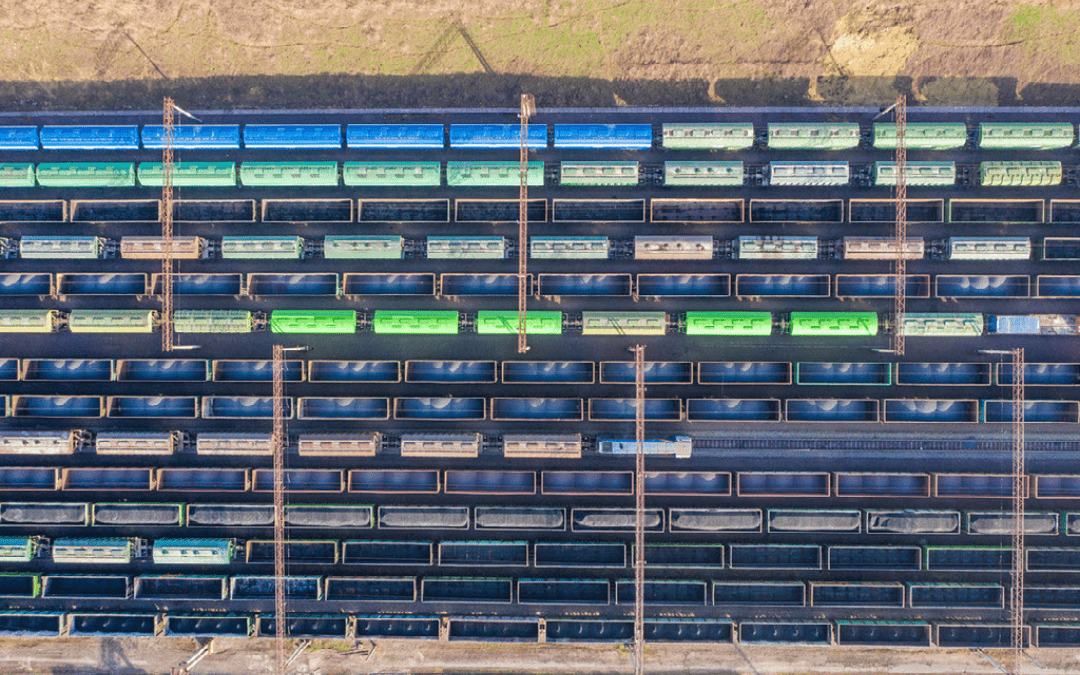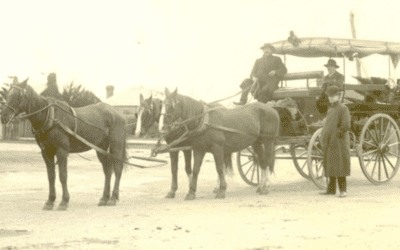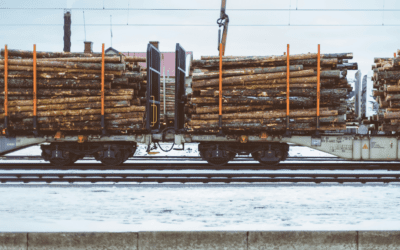Ports and rails are essential hubs for moving products and goods in and out of the states. Using international ports and rails as a source of transportation can be extremely beneficial to supply but also requires careful planning and overseeing operations. Developing systems can unlock economic growth and foster trade relationships.
Article Overview
Recognizing the importance of ports and rail networks and developing systems across borders becomes a leading factor in economic growth, smoother trade relationships, and a timely delivery process.
Explore the need for ports and rails and how they can impact international trade and the domestic supply chain.
Gateways to Global Trade
Ports are vital gateways for international trade, enabling a smooth flow of products between countries. In addition to handling shipments, they also play a crucial role in the drayage process and last-mile transportation.
Here are some key points highlighting the importance of international ports:
- Economic Impacts
Ports are undeniably critical elements in our economy and can significantly impact neighboring borders. Ports affect local and regional economies through trading trends internationally and regionally. It can also produce economic benefits with employment opportunities and contribute to regional development.
- Connecting Nations
Establishing port networks across the Mexican and Canadian borders bolsters connectivity between countries, enables a smooth trade system, and strengthens economic ties. Ports reduce logistical barriers and allow a seamless operation to reach destinations quickly and effectively.
Major ports in the U.S., Canada, and Mexico
United States:
- Los Angeles
Los Angeles is the biggest port in the United States, moving more than 9.9 million TEUs in one year. It stretches 43 miles long and takes up 8,000 acres of land.
- New York / New Jersey
The Ports of New York and New Jersey are the second most prominent ports in the United States. New York and New Jersey are the fourth busiest ports, carrying 9.5 million TEUs annually.
Canada:
- Port of Vancouver
The Port of Vancouver is Canada’s largest port and is considered the main trading port between Canada and the rest of the world. The port supports more than 76 million metric tonnes of the nation’s total cargo, leading to over $40 billion in annual import and export goods.
- Port of Montreal
Montreal has one of the most innovative ports in the world by using Artificial Intelligence to forecast the best time for drivers to drop off and pick up their containers. The annual capacity is 2.1 million TEUs, with cargo tonnage over 35 million metric tonnes.

Mexico:
- Port of Manzanillo
The Port of Manzanillo is the country’s largest port and a vital trade gateway. The location is a critical link between Asia, the Americas, and Europe, facilitating international trade flows.
- Port of Veracruz
The Port of Veracruz, located in the Gulf of Mexico, is one of Mexico’s busiest ports. It plays a significant role in international trade and serves as a central hub for bulk commodities.
Railways: Backbone of Domestic Supply Chain
Railways play a crucial role in the domestic supply chain, providing a reliable and efficient mode of transportation for goods. They form an essential transportation network, connecting nations to trade and strengthening regional integrations.
Here are just a few ways that rails play an essential role in the supply chain:
- Efficient and Cost-Effective
Rail activities can move large volumes of goods over long distances efficiently. These systems are built for transporting bulk products and, in return, offer cost-effective solutions for transporting goods over land.
Railway networks integrate seamlessly with ports and trucking networks. This integration enables the creation of efficient door-to-door supply chains, combining the strengths of different modes that optimize cargo movement and reduce transit times.
United States:
- Union Pacific Railroad
As one of the largest freight railroads in the United States, this network spans 23 states from the Pacific Coast to the Midwest and Gulf Coast regions. Union Pacific’s cross-border connections facilitate trade with Canada and Mexico, particularly in the automotive, agriculture, and energy sectors.
- BNSF Railway
BNSF Railway operates an extensive network across 28 states. This prominent freight railroad has strategic routes that link to key border crossings, such as the Pacific Northwest and the Southwest, and the movement of goods to and from Canada and Mexico.
Canada:
- Canadian National Railway
Canadian National Railway is Canada’s largest and most comprehensive railway system, covering over 32,000 kilometers of track nationwide. Cross-border connections create smooth trade between Canada and the U.S., supporting various automotive, agriculture, and energy industries.
- Canadian Pacific Railway
Another key player in Canada’s rail network is Canadian Pacific Railway. It operates an extensive system and extends from the East to the West Coast to enhance supply chain efficiency.
Mexico:
- Ferrocarril Mexicano (Ferromex)
Ferromex is vital in facilitating cross-border trade between the U.S. and Mexico. It serves various industries, including automotive manufacturing, mining, and energy.
- Kansas City Southern de Mexico (KCSM)
KCSM is an adjunct of Kansas City Southern Railway and operates in the southern region of Mexico. The rail lines connect to major U.S. networks to facilitate the shipment of goods across the border.
Opportunities
Ports and railways continuously improve the supply chain process to meet customer needs and attract new cargo. Cross-border transportation actively embraces innovation and opportunities for improvement by investing in infrastructure and leveraging technology advancements to optimize operations.
- Enhancing Border Safety and Security
Railways and ports are required to adhere to border requirements, but operations differ from other modes of transportation. Therefore, border crossing procedures must consider its unique operational requirements.
Ports and railways can strengthen border safety and security by participating in collaborative initiatives through sharing information among transportation companies. Sharing information can help identify potential risks and enhance security measures.
- Technology Advancements
Railways and Ports streamline operations and increase efficiency when using technology. Data gathering, artificial intelligence, and automated handling systems in terminal facilities can improve processes, reduce manual labor, and speed up inspection.
Current Investments
The current conditions of ports and rails raise some concerns, but new initiatives for future investments are underway. The Bipartisan Infrastructure Law plans to update rail infrastructure on the Northeast Corridor, invest in freight and rail projects to ensure a safer transportation system and improve freight movements while emphasizing a clean energy future.
Furthermore, The Inflation Reduction Act aims to improve clean energy and climate change. The $370 billion investment will lower energy costs and strengthen supply chains. EPA invested $3 billion in port equipment and technology, and a $1 billion investment will reduce emissions for heavy-duty commercial vehicles, including port transportation.
Transforming Infrastructure
Steps to a clean energy future include a $400 million grant program under the Bipartisan Infrastructure Law that invests in modernizing port infrastructure, improving air quality, and strengthening supply chains. According to Federal Highway Administrator Shailen Bhatt, the grant program will update the U.S. port system by helping to combat a significant source of air pollution.
The U.S. Department of Transportation’s Maritime Administration (MARAD) also announced funding through its Port Infrastructure Development Program (PIDP). The investment focuses on neighborhoods affected by pollution. The program will advance ports’ zero-emission technology, improve efficiency, and cut greenhouse gas emissions.
Why It Matters
Improving and developing ports and rail networks across the Mexican and Canadian borders can increase international trade and enhance domestic supply chains. With advancements in technology and border safety, connectivity improves, opportunities expand, and economic development strengthens. Cross-border ports and rails are pivotal in creating a more interconnected and streamlined economy.
Related: Sustainability Trends in Maritime






